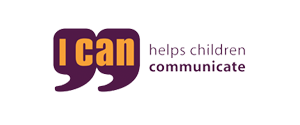Voice disorders
Voice disorder, also known as dysphonia, includes having abnormal resonance, rate, pitch, volume, voice quality and is inappropriate to the child’s gender, age and culture.
A voice disorder can manifest in different forms. Sometimes children can use coping strategies to overcome the symptoms that appear as result, causing more damage to their larynx. A voice disorder can make it difficult for a child to communicate with others in an effective manner.
Our speech and language therapists can help increase voice functioning and prevent further damage to a child’s larynx / voice by providing them with therapy and advice on how to use their voice appropriately.
What exactly are voice disorders?
During normal speech, air flows up from the lungs to the larynx where the vocal folds vibrate and produce a sound. For speech, air should flow through the larynx to the oral cavity except for the sounds m, n, ng where the air flows up to the nasal cavity (nose). Movement of the tongue, lips and jaw change the sound produced by the vocal folds to create individual speech sounds. With a voice disorder there is some level of difficulty or impairment that stops or impacts the typical process of speech. Difficulty can occur in any of the features of voice.
Features of voice:
- Voice quality - Refers to how the child’s voice sounds typically the voice should sound clear.
- Pitch - How fast the vocal folds vibrate determines the pitch of the voice. It can vary between high and low.
- Resonance - Refers to the level of nasality in a child’s speech.
- Volume - Can be used to show emotion or importance during speech and can differ between loud and quiet.
Normal (typical) voice vs disordered voice
| Features of voice | Normal (Typical Voice) | Disordered Voice |
|---|---|---|
| Voice Quality | Clear sounding voice. |
Can appear to sound: hoarse breathy strained rough |
| Pitch | Varies between high and low. |
Abnormal pitch, Too high Too low |
| Resonance | Air only coming out the nose for sounds m, n, ng. | May sound hypernasal (too much air coming through the nose during speech). May sound hyponasal (too less air coming through the nose during speech, sounds like speech when a child has a blocked nose). |
| Volume | Can vary between loud and quiet. | May not be able to control volume speak at either extreme (too loud or too quiet). |








